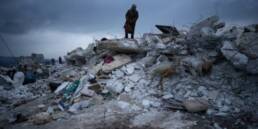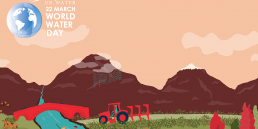Environmental racism and pollution are under the spotlight in this Netflix documentary co-directed by Ellen Page.
Actress Page, known for films such as Juno and Inception, focuses on stories in her native Nova Scotia, Canada. Alongside her co-director Ian Daniels, she navigates the documentary through filming women who are on the frontline of speaking out against the pollution affecting their communities.
There’s Something in the Water is based on a book of the same name by Professor Ingrid Waldron and explores the theme of environmental racism, which is the disproportionate impact of toxic waste on marginalised communities.
“In Canada, your postal code determines your health,” Waldron explains in the film. “Where you live has bearing on your well-being. Indigenous and black communities are the ones who tend to live near hazardous sites”.
Waldron highlights the colonialism and racism embedded within the structures of society meaning these communities are silenced, largely invisible to local governments making the decisions that affect them. She points out this requires listening to these communities to find out what their priorities are in order to build these into policy, but this is not currently happening.
Page opens the documentary with positive recollections on growing up in Nova Scotia, before a clip of her on the The Late Show is shown calling out the underlying injustices impacting marginalised communities in Canada due to environmental racism. Inevitably, due to Page’s celebrity status, this documentary gains more traction and platform than it would have otherwise. Despite this, she spends the majority of the film behind the camera, allowing the women who live in these communities to tell their stories. In fact, it is when we see and hear directly from these women, I found that the film has the most impact.
The film tells the stories of women who live in three areas in Nova Scotia. The first, Shelburne, hears from activist Louise Delisle. Since the 1940s a dump had leaked toxic waste into local wells and pumped pollution into the air, in an area where there are increased rates of cancer in the community. We follow Louise as she drives around the town pointing out house after house where someone has died or is suffering from cancer.
Next is Pictou Landing, where Michelle Francis-Denny shares about a time in the 1960s when her grandfather was tribal chief and he was misled by the local authorities into signing over treaty rights to Boat Harbour, known as A’se’k by their indigenous Mi’qmaq community. This enabled a pulp and paper mill to pump waste into the water and within days all the fish had died. An apocalyptic overhead shot of the harbour shows the devastation of the pollution spewing into the water covering the entire surface.
Cases of cancer and substance abuse spiked in the community as a result of the impact on health and their traditional way of life. “I’ve never expected to live long”, Michelle says. “Knowing that everyone passed away so young, I’ve always felt like I wasn’t going to get a chance to grow old”.
Finally, the spotlight centres on a group of ‘grassroots grandmothers’ in the town of Stewiacke where they are campaigning to stop Alton Gas build an underground storage facility on Mi’kmaq territory that would pour large quantities of salt brine into the local river. This would result in a breach of treaty agreements and potentially kill all fish stocks in the area.
Their story highlights the issue of lack of support from government with politicians, including Prime Minster Justin Trudeau, largely siding with big corporations.
I found that this documentary is at its most compelling when the women tell of the enormity of the effect on health and way of life on their communities. As Page and Daniels tour around these areas their camerawork portrays an activist perspective that is raw in its overall production and as a result the film is less visually cinematic. However, each segment allows us to see follow the women’s fight on the frontlines, even if the final section is rather short in comparison to the previous two stories.
Page’s celebrity means that this documentary and the debate around environmental racism enters the mainstream media. It is the women she interviews and their powerful stories, though, that give depth to this film.
As one of the women tells us, “we need a future, we need to be connected to the land, we need to have a sustainable environment”. And this film makes a good attempt at informing audiences about the devastation resulting from environmental racism in many marginalised communities, which could in turn fuel further activism.
There’s Something in the Water is currently available on Netflix.
Related Posts
March 15, 2023
Turkey and Syria earthquakes: what we know so far
In the early hours of 6 February 2023,…
August 28, 2020
Brazil: Indigenous Peoples under threat from COVID-19
As concern increases over the threat…



